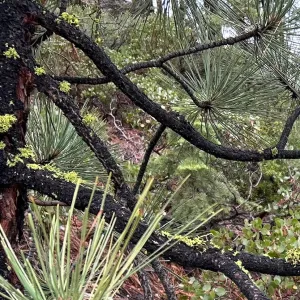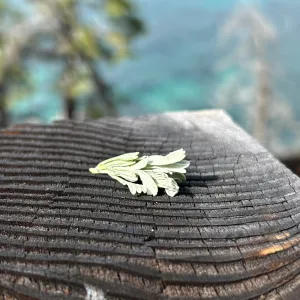Blog article by Karen Metz
My husband and I got to go up to Tahoe North Shore in the middle of October. We were looking forward to taking several hikes in the beautiful fall scenery. It had been six years since our last visit and that last visit had been limited as I was rehabbing from an illness. I had only managed one very short hike. So, we were very eager and excited.
A few days before we left, though, weather reports changed, and it became clear the area might get snow after we arrived. So, we had to haul out the winter clothes, parkas and snow boots as well as our planned hiking shoes and poles.
It was very cold but beautiful. Several times, there were very threatening skies and brief showers. It finally snowed lightly the second night and into the third morning. At Tahoe Vista, where we were, nothing much stuck to the ground at lake level, although the trees behind us were dusted with snow. We could look across the lake and up and down the shoreline and see snow on the hills.

After the snow stopped, we decided to strike out and explore. We thought, given the cold and possibly icy conditions, it might be better to choose a trail that was mostly paved. We chose the Tahoe East Shore Trail in Nevada, starting at Sand Harbor State Park and walking upwards to Hidden Beach and back.
The lake views were amazing. Everything was crisp and cold. We did see snow on the beach at Sand Harbor, but the paved trail was clear. There are many small bridges on this trail and slushy ice persisted on those. I was glad to have on my quilted vest and parka as well as my snow boots.
There were birds everywhere, so many calls to listen to in the crisp air. For the first two-thirds of the walk, we essentially had the trail to ourselves, which was quite magical! Later, as things warmed up, we began to see other people.
Although most of the time we spent looking lakeward, we did notice the beautiful trees and vegetation. We appreciated the stark contrast of the spiky pine needles against the vivid moss growing on the dark pine bark and the tenacity of a pine tree holding on to a crumbling cliffside, even with many of its roots exposed to the air.

We walked past a hillside covered with numerous small shrubs. Most of the flowerheads were desiccated and golden brown. There was a clean, wild scent. I passed a few more, further along the hike, that still had bright yellow blooms. I decided I would have to check these plants out on the return portion of the hike. Maybe they would be a good blog topic.
Later, on our way back, I stopped at the hillside to investigate the plants. According to my phone, the plant was Ericameria nauseosa, also known as Rubber Rabbit Brush or Chamisa. According to Calscape.org, the website for the California Native Plant Society, this plant could get three to nine feet tall, and those yellow blossoms attract butterflies and bees. It is drought-tolerant as well. Several sites mentioned a pungent, unpleasant odor. The problem was that it wasn’t what I had been smelling. Even rubbing the leaves together didn’t give me any help.

So, I decided to keep investigating, keep following my nose. Finally, I found it! It was a less showy silver-gray plant with small leaves that emitted a strong but pleasant odor when I rubbed the leaves. The phone identified the plant as Artemesia tridentata, Big Sagebrush. That’s it, that’s what I had been smelling, Sagebrush. Calscape describes these native plants as highly aromatic, long-lived, drought-tolerant and nitrogen-fixing. They provide food and shelter for various insects, birds, and mammals. They require full sun and form mounds three to 15 feet tall.
Lesson learned: appearances can be deceiving. The fragrance didn’t come from the multitude of showier plants on the hillside but from a quieter plant that was less obvious in the landscape. Sometimes it takes all your senses to figure things out. Lesson learned by my husband: hiking with a Master Gardener is always going to take longer than you expected.


